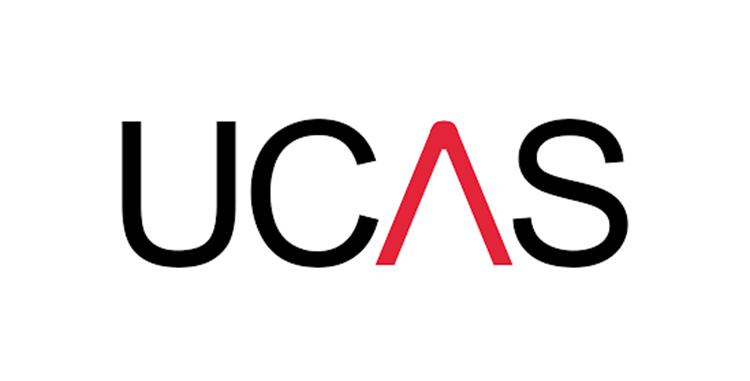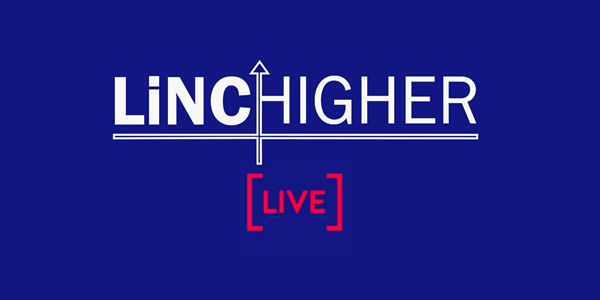This page will outline key considerations regarding Student Finance.
Student Finance for Higher Education is split into two distinct phases:
1. Application
2. Repayment
1. Application
Use the heading tabs to expand and collapse each section.
Applications for student finance are annual – you apply for one year’s funding at a time.
Applications for undergraduate courses usually open around February or March for courses beginning in the next academic year (from September onwards). Applications are hosted online at www.gov.uk/studentfinance
In order to maximise the amount of money you receive to live on, you should look out for the question on the application asking “Do you want to apply for the higher amount of loan?” You should generally answer yes to this question if you believe your household’s income is likely to be less than around £63,000.
Your application will be in respect of two core elements of funding:
Tuition Fees – not income-assessed
Maintenance – partially income-assessed
Most UK students will be entitled to a Tuition Fee Loan that is non-income assessed and equivalent to the cost of their course fees as long as they have not spent any previous time on a higher education course, and they have been ordinarily resident in the UK (and islands) for the 3 year period before their course begins.
The Tuition Fee Loan is always made available at a rate equivalent to the cost of the course up to the maximum a university can charge (currently £9,250). If your course costs less than £9,250 a year, then your fee loan will match that amount – you can’t apply for the full £9,250 and pocket the difference. The main reason being that the Tuition Fee Loan gets paid to the university, not to you.
The same eligibility criteria apply to the Maintenance Loan that apply to the Tuition Fee Loan – there is a non-income assessed version of the loan that most students can access. By answering ‘yes’ to the question on the application “Do you want to apply for the higher amount of loan?”, you can be considered for more Maintenance Loan – which could mean more money reaching your pocket to help you whilst you study.
The non-income assessed maintenance loan is roughly half the value of the maximum amount available each year. How much loan you will be considered for depends on a number of factors:
1. Whether you apply for the income-assessed loan (you will automatically receive the basic non-income assessed amount if you don’t)
2. Where you live during term-time (there is a slightly lower rate of loan for students living in the parental home, and a higher than usual rate for those studying in London
3. Whether you are in your final year of study (there’s a slightly lower rate for the final year of your course)
4. Whether you are a student with an underlying entitlement to welfare benefits (most students can’t access benefits during full-time study, but those who are lone parents, full-time student couples with financial responsibility for a child, or who are in receipt of some disability benefits can access a higher rate of maintenance loan)
Once your application has been considered it will be assessed by the student finance agency serving the UK country where you ordinarily live.
How much Maintenance Loan is available?
|
2023/24 Student studying outside London (not living with parent(s) during term time) |
|
|
Household Income |
Loan Amount |
|
£25,000 |
£9,978 |
|
£30,000 |
£9,265 |
|
£35,000 |
£8,552 |
|
£40,000 |
£7,839 |
|
£45,000 |
£7,125 |
|
£50,000 |
£6,412 |
|
£55,000 |
£5,699 |
|
£60,000 |
£4,986 |
|
£62,343 and above |
£4,651 |
|
2023/24 Student living with parent(s) during term time |
|
|
Household Income |
Loan Amount |
|
£25,000 |
£8,400 |
|
£30,000 |
£7,694 |
|
£35,000 |
£6,988 |
|
£40,000 |
£6,282 |
|
£45,000 |
£5,576 |
|
£50,000 |
£4,869 |
|
£55,000 |
£4,163 |
|
£58,291 and above |
£3,698 |
Higher rates of Maintenance Loan are available to students studying in London.
Once your application is complete and submitted, it will usually take around 6 weeks for your student finance to be processed. It could take longer if your application is incomplete, or some further information is required due to your circumstances.
Once your application is processed, student finance will confirm the outcome by sending a ‘student finance notification’ with a summary of the funding you will receive for your tuition fee loan, maintenance loan – and any additional funding which may be applicable to you.
Grants are available to students who have dependants of their own. These grants are income-assessed.
For students with children of their own:
- Parents Learning Allowance
- Childcare Grant
For students who have an adult financially dependent upon them:
- Adult Dependants Grant
Students with a disability, mental health condition, or specific learning difference can apply for additional funding through the Disabled Student’s Allowance. This is not income assessed – the DSA is paid according to need, and can help unlock additional support to assist students engage with their studies.
Once your student finance has been calculated, you will receive a schedule of payment. It will show how your Tuition Fee Loan and Maintenance support is paid during the academic year.
Tuition Fee Loan
The fee loan is paid in three termly instalments.
|
Term 1 |
25% instalment |
|
Term 2 |
25% instalment |
|
Term 3 |
50% instalment |
The above instalments match the liability periods for the fees charged by your university. The fee loan matches the fees due during each term.
Maintenance Loan (and Dependants Grants)
|
Term 1 |
33% |
|
Term 2 |
33% |
|
Term 3 |
34% |
Your payment schedule will help confirm the dates of each instalment to assist you in your budgeting over the year.
Disabled Student’s Allowance
The Disabled Student’s Allowance is allocated according to need and is paid directly to service and equipment providers.
The student loan system has been criticised by the National Audit Office for not placing sufficient emphasis on the government’s expectation that a student’s household might be expected to contribute to the student’s maintenance support. This only applies to students whose incomes are above £42,875, but the expected rates of ‘assessed contribution’ are given in the table below:
2023/24 Student studying outside London (not living with parent(s) during term time)
|
2023/24 Student studying outside London (not living with parent(s) during term time) |
||
|
Household Income |
Assessed Contribution |
Loan Amount |
|
£42,875 |
£0 |
£7,429 |
|
£45,000 |
£304 |
£7,125 |
|
£50,000 |
£1,017 |
£6,412 |
|
£55,000 |
£1,730 |
£5,699 |
|
£60,000 |
£2,443 |
£4,986 |
|
£62,343 and above |
£2,778 |
£4,651 |
When you take the assessed contribution figure and add it to the available loan amount, the total is always £7,429 – the equivalent of a loan for a student whose household income is £42,875. The government’s expectation is that household’s will be able to provide additional funds of up to £2,778 to support the student each year.
The problem with this assumption is that it is purely from an assessment of household income without taking expenditure into account. So essential bills, housing costs, food and travel expenditure are not factored in. The cost of living crisis makes it even less likely a household will be able to provide additional support equivalent to the figures suggested by the government.
2. Repayments
Use the heading tabs to expand and collapse each section.
Repayments only begin once you:
1. Finish your course
2. Are in employment earning over the repayment threshold (note the various thresholds below, all of which can trigger a repayment)
The only exception to the above is where you leave your course early, in which case you may incur an overpayment of funding, which will be immediately repayable. You should seek advice from your university if this situation arises
The current repayment threshold is £25,000 (before tax). Repayments start in the April after your course finishes, so there is usually a few months’ gap before your repayments begin after you complete your studies in the summer.
Plan 5 Repayment thresholds (before tax):
Yearly threshold Monthly threshold Weekly threshold
£25,000 £2,083 £480
If your earnings from employment (before tax) are below £25,000, you will not be required to pay anything back to the Student Loans Company.
Once your salary goes over £25,000, the following formula applies:
e.g. Salary £30,000 (before tax)
£30,000 – minus repayment threshold (£25,000) = £5,000
Student Loan repayments are based on 9% of your earnings over the threshold, so:
£5,000 X 9% = £450.
£450 will be your annual repayment to the Student Loans Company if your salary is £30,000. To get the monthly repayment figure, we just need to divide by 12:
£450.00 ÷ 12 = £37 per month (any pence are rounded down)
Using the above formula, a salary of £40,000 (before tax) would result in monthly payments of £112.00 per month.
Repayments can last a maximum of 40 years. If any loan remains to be paid 40 years after you leave your course, it is cancelled (written off).
Your repayments are always determined by what you earn, not what you owe.
If you are an employee, your earnings are deducted at source by your employer in the same way as PAYE. If you are self-employed, your repayments will be calculated as part of your self-assessment tax return. If you find your career taking you abroad, please ensure you contact the Student Loans Company – otherwise you may incur penalty charges and penalty interest which can make the loans a lot more expensive.
Interest is applied to student loans for both tuition fees and for maintenance. Interest is applied from the date of each instalment as and when it is paid, so is incremental each year of study.
For students on the Plan 5 system interest will equate to the rate of RPI (Retail price Index), which serves to keep the amount you owe at the same value in real terms as time goes by.
Plan 5 repayments take effect for students whose courses start from September 2023 onwards.
Students whose courses began in an earlier academic year will be on a previous version of the repayments scenario:
Plan 1 repayments (for courses starting before 1st September 2012):
Plan 1 Repayment thresholds (before tax):
Yearly threshold Monthly threshold Weekly threshold
£22,015 £1,834 £423
The interest rate will be the RPI of the previous March, or 1% above the highest base rate of a nominated group of banks (Bank Base Rate), whichever is lower. The interest rate is set on 1 September each year, although it can change during the year too.
Plan 2 repayments (for courses starting from 1st September 2012 to 31 July 2023):
Plan 2 Repayment thresholds (before tax):
Yearly threshold Monthly threshold Weekly threshold
£27,295 £2,274 £524
The repayment threshold for Plan 2 loans is £27,295. The same calculation methodology based on 9% of earnings over the repayment threshold applies to Plan 2 repayments.
Interest is applied at the maximum rate during study (RPI plus 3%). After graduation, if you earn up to the repayment threshold (£27,295) interest will be equivalent to RPI. If your earnings are over £49,130, interest will be RPI plus 3%. If your earnings are between £27,296 and £49,130, then the interest will be RPI plus up to 3% (a sliding scale which increases in line with your earnings).
Plan 3 repayments are in respect of the Postgraduate Loan scheme.
The PG Loan Scheme operates on a repayment threshold of £21,000 and repayments are calculated on 6% of earnings over the threshold.
Plan 3 Repayment thresholds (before tax):
Yearly threshold Monthly threshold Weekly threshold
£21,000 £1,750 £403
Plan 4 repayments relate to the Advanced Learner’s Loan scheme for Further Education study.
Plan 4 Repayment thresholds (before tax):
Yearly threshold Monthly threshold Weekly threshold
£27,660 £2,305 £532
Additional considerations with Student Finance
Maximising income during study
Bursaries and University-based funding
Most universities charging tuition fees of over £6,165 a year for their courses will offer some form of additional financial support for their students. This may be in the form of bursaries, scholarships (often amounting to tuition fee discounts), or through discretionary funds.
Bursary schemes vary from university to university, so you will need to check the scheme at each university you are considering studying at. Contact their student services team if you are unsure or can’t find the information about their bursary scheme. Bursaries may range from hundreds to thousands of pounds per year of study but are typically non-repayable.
Discretionary Funds are often described as ‘hardship funds’ – most universities will offer a scheme to respond to hardship arising from unexpected or unforeseen circumstances. It’s always worth checking to see if you can bolster your income from these sources as they typically do not need to be repaid. Contact your student services team for more information.
Part-time work
As a full-time student, you can earn as much as you wish from employment and it will not affect the amount of student finance you receive. Income from a part-time job can be a great way of supporting your finances during study as you will typically get paid weekly or monthly and it can be far easier to budget on this basis, rather than relying on the three termly lump sums of student finance paid over the year.
It is really important to find the right balance between part-time work and your studies, so that one is not adversely affecting the other. Some students describe employers being demanding in terms of the number of hours they expect them to work, so it is usually a good idea to make it clear to your employer that you are studying and that this might mean your availability is affected (particularly during assessment periods).
Working part-time can also give you important real-world experience alongside your studies, and can provide a foundation in key transferrable skills you may find useful in your career, so it is important to take on employment opportunities if you can, even if it is only during the vacation periods during your studies.
Lifelong loan entitlement from 2025 onwards
The government plans to replace the Tuition Fee Loan with the Lifelong Loan Entitlement from 2025 onwards. This change will only affect students who start a higher education course from September 2025. Students whose courses started before that date will remain on the pre-existing funding scheme.
We do not yet have much detail about how this will work in practice, but there will be some form of maintenance loans and grants available alongside the LLE – we are unable to confirm any details about the way the new system will work until the government publishes more detail.
















